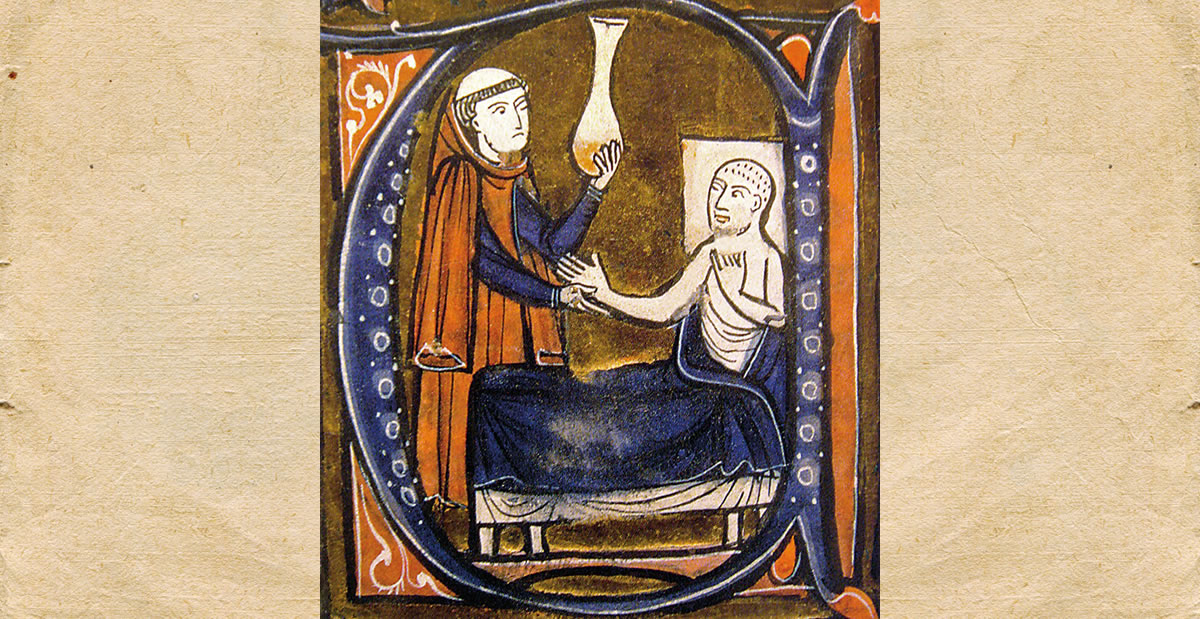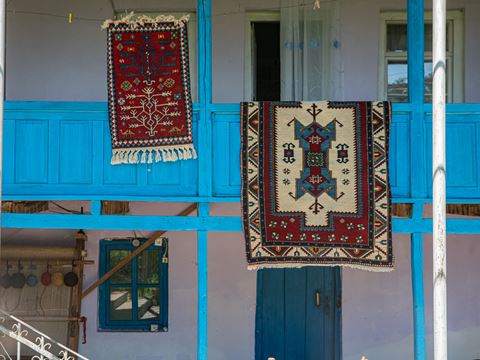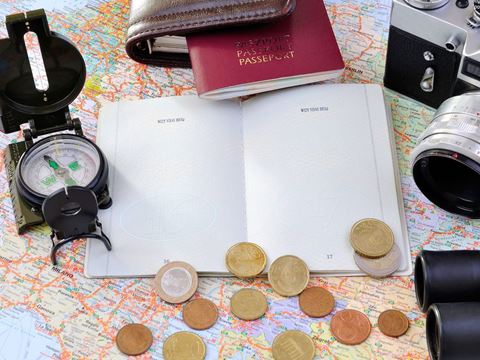
Analyzing Textual Evidence To Understand the Past
Architecture
History
Science
Levant
Arab Gulf
North Africa
Written by Julie Weiss
For teachers: We encourage reproduction and adaptation of these ideas, freely and without further permission from AramcoWorld, by teachers at any level.
Common Core Standards met in this lesson: RI.9-10.1, RI.9-10.2 (see details below).
—The Editors
Do you have comments? I'd be pleased to hear from you at [email protected].
—Julie Weiss
The Islamic Roots of the Modern Hospital
Exploring the past can help us see the present more clearly by showing us the kinds of questions we might be asking about the world around us today. Reading "The Islamic Roots of the Modern Hospital" and completing the following activities will give you a chance to think more deeply about hospitals of the past and present. By the time you finish these activities, you will be able to accomplish the following:
•Compare early Islamic hospitals to modern-day hospitals.
•Answer key questions about hospitals of the past.
•Research hospitals in your area to answer the same key questions.
•Describe your own vision of what hospitals should be.
Getting Started
Start by reading the policy statement of the bimaristan of Al-Mansur Qalawun in Cairo. When you've finished, take two minutes to write your reactions to it. Don't worry—this doesn't need to be your best-ever writing. When the two minutes are up, start a discussion about what you've written, with volunteers sharing answers to these questions:
- What in the document stands out to you?
- Do you agree with the policy statement? Explain why or why not.
- How does the policy compare to what you know about hospitals in your own community.
Both Medical and Social
Writer David Tschanz asserts that the "hospital is an invention that was both medical and social ." What exactly does that mean? To find out, read about the first Islamic hospitals, the ideas that shaped them and how they compared to European hospitals. Complete the table below to help you organize the information.
| Beliefs About Sickness | Purpose of Hospitals | Hospital Design | |
|---|---|---|---|
| European | |||
| Islamic |
Then complete the following sentences to summarize the information in the table.
Because Europeans believed , their hospitals looked like and focused on . Because Muslims believed , their hospitals looked like and focused on .
Key Questions About Hospitals

The article addresses some key issues about medical treatment in Islamic hospitals of the past. Here are some questions that the text answers. Posing them as questions here will help you distill some central issues about medicine, society and hospitals. Working alone or with a partner, answer these questions, writing your answers in the correct column of the table below. Who got treated at Islamic hospitals? What was considered to be the best setting for treatment? Who paid for treatment? What was paid for besides treatment? Who was trained to care for the sick? How were they trained? Who was responsible for the treatment's outcome? Write your answers in the table below. You'll fill in the other columns later.
| Islamic Hospitals | Your Local Hospital(s) | Your Ideal Hospital | |
|---|---|---|---|
| Who gets treated? | |||
| What is considered to be the best setting for treatment? | |||
| Who pays treatment? What gets paid for besides treatment? | |||
| Who is trained to care for the sick? How are they trained? | |||
| Who is responsible for a treatment's outcome? |
Once you've filled in the first column, think about hospitals in your community today. As a class, discuss what you know about your local hospitals. Can you answer any of the questions above about your hospitals? If not, do some research to find answers for them. You might start with the hospitals' websites. Look for the hospital mission statements and policies. You might even invite a hospital administrator to visit your class. When you have enough information to answer the questions, complete the appropriate column in the table. What similarities do you notice between then and now? What differences do you notice?
Finally, think about what you would consider to be the ideal hospital. Answer the same questions for your ideal hospital. how does your ideal compare to the two hospital types you have now studied? If your ideal hospital differs from your local hospital, what do you think stands in the way of there being a hospital like your ideal?
Common Core Standards met in this lesson:
RI.9-10.1 Cite strong and thorough textual evidence to support analysis of what the text says explicitly as well as inferences drawn from the text.
RI.9-10.2 Determine a central idea of a text and analyze its development over the course of the text, including how it emerges and is shaped and refined by specific details; provide an objective summary of the text.
Other lessons
.jpg?cx=0.31&cy=0.53&cw=480&ch=360)
Building Bridges in the Classroom: The Stari Most Story for Teaching Writing and Cultural History
For the Teacher's Desk
Teach students how to uncover details through metaphor telling the story of their communities.
The Legacy of Borchalo Rug-Weaving in Georgia: Explore Cultural Change Through Critical Reading and Design
Art
History
Anthropology
The Caucasus
Analyze efforts to preserve a centuries-old weaving tradition, and connect the Borchalo story to questions of identity, memory and heritage.
Aramco World Learning Center: No Passport Required
For the Teacher's Desk
Project-based learning lies at the heart of AramcoWorld’s Learning Center. Link its resources into classroom curriculum, no matter the subject.